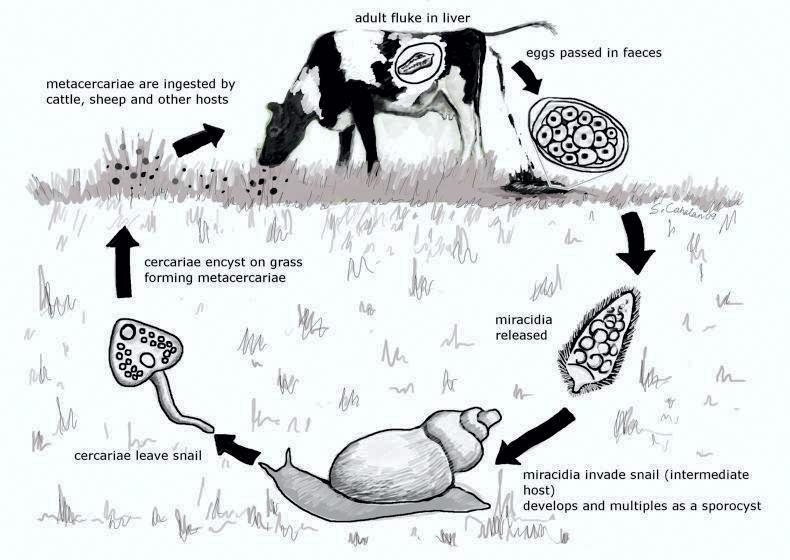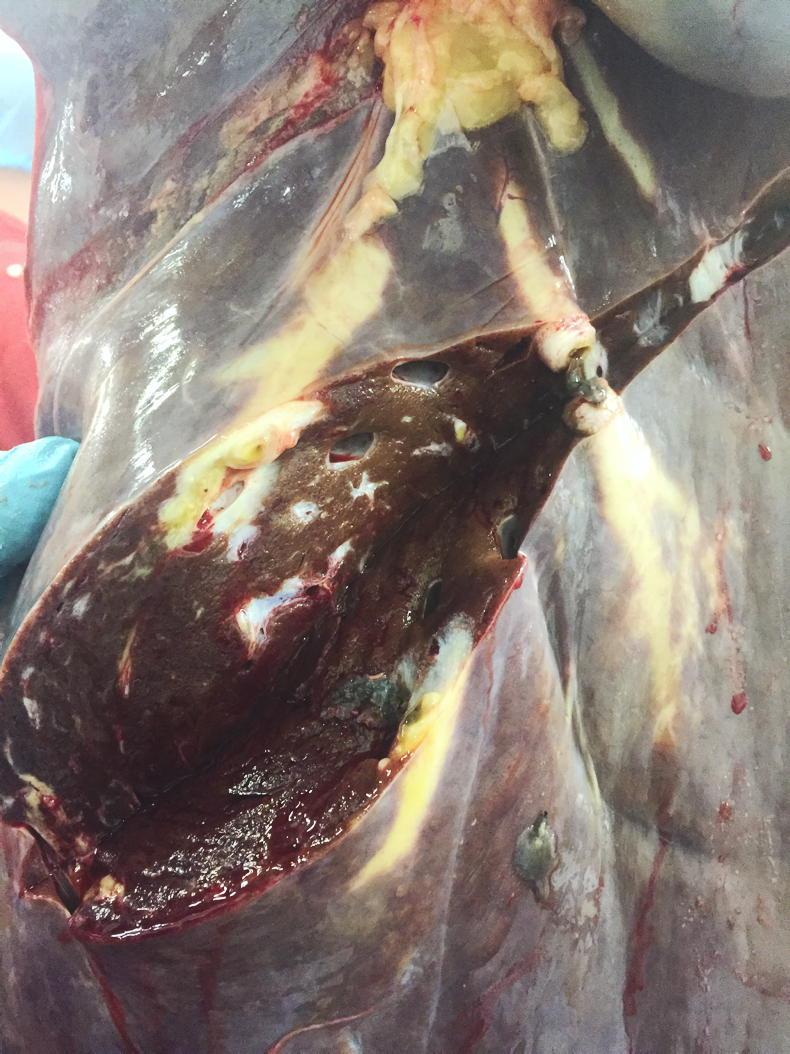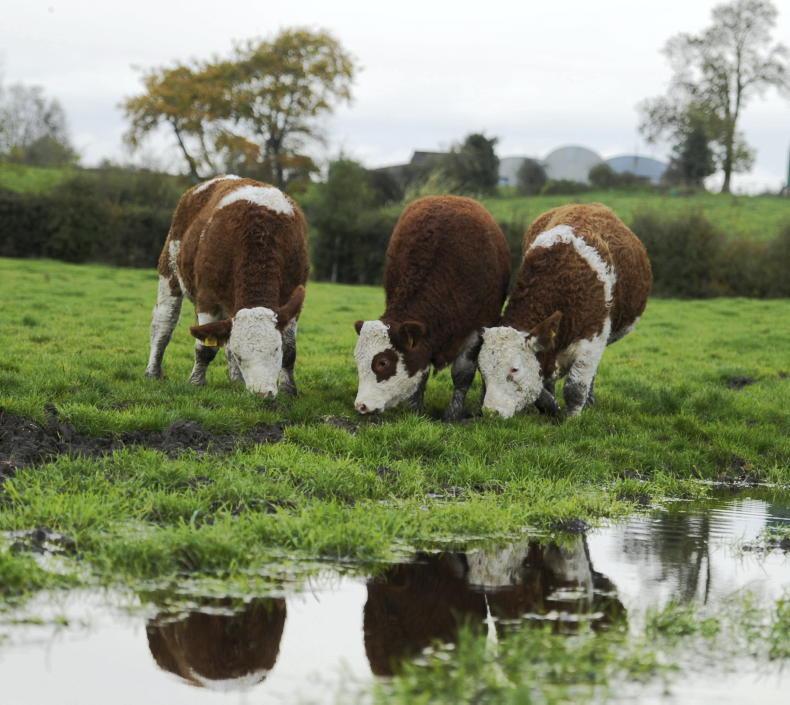Farmers who slaughter cattle at one of the participating factories may be familiar with the liver and lung reports from the Beef HealthCheck programme.
These reports give health information on liver fluke, liver abscesses and pneumonia for each batch of animals sent to the factory.
The programme delivered by Animal Health Ireland, in partnership with Meat Industry Ireland and the meat processors, has been running since 2016 and farmers are able to access all their current and previous results by logging into a desktop version of the ICBF website (www.icbf.com) under the Animal Health menu (see www.bit.ly/3Rzo1iR for details).
You do not need to be a HerdPlus member to access this information. On the ICBF website, you will be able to see the slaughter reports for batches sent to slaughter or individual animal results, as well as summarised trends.
Take the opportunity to discuss the results from reports with your veterinary practitioner, especially if you are seeing a worrying trend.
How to interpret the Beef HealthCheck reports
A liver and lung score is available for each animal reported. These indicate if the liver or lung was healthy, or if disease was present.
These scores can indicate liver fluke parasites seen, liver damage by liver fluke (but no parasites seen), liver abscesses, pneumonia or other conditions.
Other conditions are rarely reported, but can include cysts, tumours or inflammation from other causes and would need further investigation if seen frequently.
Scores of two or three for the liver suggest a review of the liver fluke control plan on-farm.
Scores of two or three for the lungs suggest a closer look at respiratory disease control and vaccination.
Why is liver
fluke a concern?
Healthy livestock are more productive with improved average daily gains, milk yields, improved fertility and good carcase quality.
Poor health is taxing and wastes energy that can be used for growth and production.
Analysis of the slaughter health data has shown that when other factors are accounted for, heifers and steers without evidence of liver fluke infection were, on average, 38 days younger at slaughter.
Similarly, heifers and steers without evidence of liver abscesses or pneumonia were, respectively, at least eight and 11 days younger at slaughter.
Recent figures suggest that each day reduced from slaughter age of these animals reduces emissions of greenhouse gases by 5.6kg CO2e – important gains given the current industry focus on sustainability.
Treating for liver fluke around housing
It can take up to 12 weeks for liver fluke to develop fully but much of the liver damage can be caused during the immature life stage. Waterlogged areas should be avoided for grazing in late autumn, particularly by young animals.

Figure 1: Lifecycle of liver fluke.
Flukicides can be grouped into three main types, those with activity against adult fluke only (eg albendazole, clorsulon or oxyclozanide), those with activity against fluke from six to eight weeks (eg closantel, nitroxinil or rafoxanide), or flukicides that kill early-immature liver fluke (triclabendazole).
Severe infections
On farms with severe infections, it may be necessary to treat pre-housing or with a product that works against the immature life stages to prevent losses.
On many farms, treatment once animals are housed is sufficient but they may need a second treatment 10 to 12 weeks later if using an adult-only flukicide.
Alternatively, treatment can be delayed until six weeks after housing if using a product active against the six- to eight-week-old immature fluke. There are some reports of resistance to triclabendazole containing products, so these should be used with caution.
Clinical disease
Infection with rumen (stomach) fluke does not usually cause clinical disease and adult rumen fluke seem to be tolerated fairly well.
It is the immature stage of the rumen fluke that usually causes disease, particularly if many of the parasites were picked up in late autumn.
Similar to liver fluke, avoid grazing younger animals on wet or poached land.
As there is only one product available in Ireland for treatment for rumen fluke, always discuss whether treatment is necessary with your veterinary practitioner.
Other parasites of
concern at housing
Stomach and gut worms, as well as lungworms, can usually be controlled by any of the broad-spectrum wormers.
One exception is that products containing levamisole are not effective against the dormant stage of the Ostertagia worm and the clear drenches (ivermectins) or certain white drenches should be used instead.
The Ostertagia worms lie in the stomach wall over the winter period and can cause scours in the late winter/early spring (February to May) when they restart their development.
In winter housing, the longer hair coats, warmth, humidity, and lack of UV light create an environment for lice and mites to thrive and closer contact allows for easy spread.
All animals in a group should be treated at the same time to prevent reinfection from untreated animals.

Liver infected with fluke.
Lice treatments have no effect on the eggs and once these hatch three to four weeks later, an animal may become re-infected and need re-treatment.
If a treatment does not seem to be effective, consult with a veterinary practitioner to identify the parasite involved and develop a tailored treatment plan.
Be sure to check the withdrawal periods for any medicines used in the finishing or dry period, to avoid residues in the meat or milk at the next lactation.
Farmers who slaughter cattle at one of the participating factories may be familiar with the liver and lung reports from the Beef HealthCheck programme.
These reports give health information on liver fluke, liver abscesses and pneumonia for each batch of animals sent to the factory.
The programme delivered by Animal Health Ireland, in partnership with Meat Industry Ireland and the meat processors, has been running since 2016 and farmers are able to access all their current and previous results by logging into a desktop version of the ICBF website (www.icbf.com) under the Animal Health menu (see www.bit.ly/3Rzo1iR for details).
You do not need to be a HerdPlus member to access this information. On the ICBF website, you will be able to see the slaughter reports for batches sent to slaughter or individual animal results, as well as summarised trends.
Take the opportunity to discuss the results from reports with your veterinary practitioner, especially if you are seeing a worrying trend.
How to interpret the Beef HealthCheck reports
A liver and lung score is available for each animal reported. These indicate if the liver or lung was healthy, or if disease was present.
These scores can indicate liver fluke parasites seen, liver damage by liver fluke (but no parasites seen), liver abscesses, pneumonia or other conditions.
Other conditions are rarely reported, but can include cysts, tumours or inflammation from other causes and would need further investigation if seen frequently.
Scores of two or three for the liver suggest a review of the liver fluke control plan on-farm.
Scores of two or three for the lungs suggest a closer look at respiratory disease control and vaccination.
Why is liver
fluke a concern?
Healthy livestock are more productive with improved average daily gains, milk yields, improved fertility and good carcase quality.
Poor health is taxing and wastes energy that can be used for growth and production.
Analysis of the slaughter health data has shown that when other factors are accounted for, heifers and steers without evidence of liver fluke infection were, on average, 38 days younger at slaughter.
Similarly, heifers and steers without evidence of liver abscesses or pneumonia were, respectively, at least eight and 11 days younger at slaughter.
Recent figures suggest that each day reduced from slaughter age of these animals reduces emissions of greenhouse gases by 5.6kg CO2e – important gains given the current industry focus on sustainability.
Treating for liver fluke around housing
It can take up to 12 weeks for liver fluke to develop fully but much of the liver damage can be caused during the immature life stage. Waterlogged areas should be avoided for grazing in late autumn, particularly by young animals.

Figure 1: Lifecycle of liver fluke.
Flukicides can be grouped into three main types, those with activity against adult fluke only (eg albendazole, clorsulon or oxyclozanide), those with activity against fluke from six to eight weeks (eg closantel, nitroxinil or rafoxanide), or flukicides that kill early-immature liver fluke (triclabendazole).
Severe infections
On farms with severe infections, it may be necessary to treat pre-housing or with a product that works against the immature life stages to prevent losses.
On many farms, treatment once animals are housed is sufficient but they may need a second treatment 10 to 12 weeks later if using an adult-only flukicide.
Alternatively, treatment can be delayed until six weeks after housing if using a product active against the six- to eight-week-old immature fluke. There are some reports of resistance to triclabendazole containing products, so these should be used with caution.
Clinical disease
Infection with rumen (stomach) fluke does not usually cause clinical disease and adult rumen fluke seem to be tolerated fairly well.
It is the immature stage of the rumen fluke that usually causes disease, particularly if many of the parasites were picked up in late autumn.
Similar to liver fluke, avoid grazing younger animals on wet or poached land.
As there is only one product available in Ireland for treatment for rumen fluke, always discuss whether treatment is necessary with your veterinary practitioner.
Other parasites of
concern at housing
Stomach and gut worms, as well as lungworms, can usually be controlled by any of the broad-spectrum wormers.
One exception is that products containing levamisole are not effective against the dormant stage of the Ostertagia worm and the clear drenches (ivermectins) or certain white drenches should be used instead.
The Ostertagia worms lie in the stomach wall over the winter period and can cause scours in the late winter/early spring (February to May) when they restart their development.
In winter housing, the longer hair coats, warmth, humidity, and lack of UV light create an environment for lice and mites to thrive and closer contact allows for easy spread.
All animals in a group should be treated at the same time to prevent reinfection from untreated animals.

Liver infected with fluke.
Lice treatments have no effect on the eggs and once these hatch three to four weeks later, an animal may become re-infected and need re-treatment.
If a treatment does not seem to be effective, consult with a veterinary practitioner to identify the parasite involved and develop a tailored treatment plan.
Be sure to check the withdrawal periods for any medicines used in the finishing or dry period, to avoid residues in the meat or milk at the next lactation.








 This is a subscriber-only article
This is a subscriber-only article











SHARING OPTIONS: